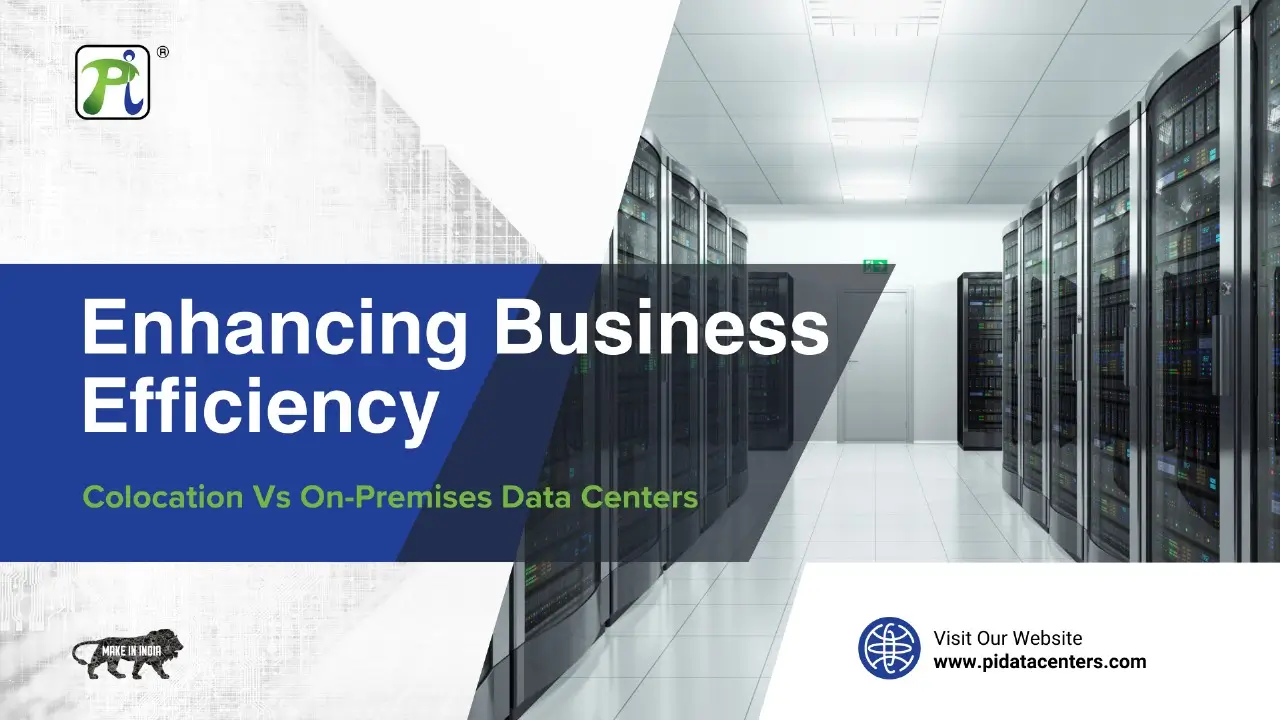We Will Get Back To You As Soon As Possible


The global Data Center Colocation market was valued at an impressive $61.6 billion in 2023 and is expected to surge to $143.9 billion by 2030. As the digital landscape continues to evolve at a rapid pace, businesses are increasingly looking for innovative ways to optimize their IT infrastructure.
Colocation services, which provide a shared data center environment, are rapidly gaining popularity thanks to their clear advantages over traditional on-premises infrastructure. This growth is fueled by rising digitalization, widespread cloud adoption, and the demand for scalable IT solutions, which help businesses accelerate their growth and maintain a competitive edge. Staying informed about these trends and market drivers is essential for making smart, strategic business decisions. Let us understand the topic further
An on-premises data center is a physical facility that organizations own and operate to house their IT infrastructure and data management systems. The organization is responsible for building the data center according to its specifications to ensure that it has access to a reliable power supply to keep the facility operating. It is also responsible for ongoing data center management, including upgrading the equipment and systems to support more advanced technologies.
Businesses often choose on-premises data centers for several key reasons:
A colocation data center is operated by a service provider that rents power, space, and managed services to its customers. As the name suggests, multiple customers are colocated within the same data center. As IT requirements continue to evolve, the colocation provider will invest in improvements to the facility, and customers will benefit from those improvements at no additional cost.
Businesses choose Colocation for their IT infrastructure due to several key advantages:
Colocation offers a balance of control, security, and cost-effectiveness. It is an attractive solution for businesses looking for resilient and scalable IT infrastructure without the burden of owning and managing their data centers.
As businesses move towards becoming future-ready digital enterprises that need to match the pace, many have started considering that setting up and managing on-premises data centers is no longer part of their strategy due to its management complexity and involved high investment.
The potential drawbacks of on-premises data centers include:

These challenges make it difficult for businesses to remain agile and competitive, especially as technology evolves.
The IT landscape has evolved from requiring users to be physically close to systems to allowing seamless systems management from anywhere. In the past, businesses often preferred on-premises data centers to keep their infrastructure near offices with large employee concentrations. However, with the rise of highly distributed workforces in recent years, businesses must serve employees and customers across multiple global locations. Concentrating resources in one place has become expensive and, at times, an inefficient strategy.
The post-pandemic shift has led many companies to rethink the need for large office spaces. Except for industries like manufacturing, where a physical presence is essential, most businesses no longer invest in owning office space. So why should data centers be any different? Building an on-premises data center is not only costly but also time-intensive. Companies will need substantial funding to get the data center up and running. Once it's operational, ongoing investments in upgrades and maintenance are immediately required to keep it future-ready. Expanding capacity and establishing new connectivity may also become increasingly complex over time.
Additionally, data center expertise is not evenly distributed. Think of it like baking a cake: anyone can buy the ingredients and follow a recipe, but for a genuinely exceptional cake, you need the skills and experience of a professional baker. Similarly, IT teams that only manage data centers for their own company need to gain the specialized expertise of professionals who design and operate them full-time. These experts work around the clock, overseeing facilities used by thousands of companies globally, giving them a depth of knowledge and experience that in-house teams can't match.
Colocation providers are experts in designing and managing data centers, while each business has its own core expertise. When companies allocate staff, time, and resources to maintaining on-premises data centers, they divert attention away from their primary business functions, ultimately becoming less efficient at what truly matters.
Among the most apparent benefits of adopting Colocation are the financial ones. Instead of owning and operating buildings, businesses can shift to an OPEX-based cost model for data center services, which provides more predictability in their budgets and helps them feel more confident that they're getting exactly what they're paying for. In contrast, building an on-premises data center might require them to overestimate their capacity needs just to be on the safe side, thus ending up with low utilization rates.
In addition, Colocation providers often partner with leading hardware companies to offer businesses cutting-edge technology, infrastructure, and services they might need help affording or maintaining. These partnerships provide access to high-performance servers, storage, and networking equipment that are regularly upgraded and optimized. As a result, businesses benefit from top-tier infrastructure without investing heavily in hardware. Additionally, these collaborations offer seamless integration, improved technical support, and faster deployments, giving companies the extra mileage needed to enhance performance, scalability, and reliability while staying competitive.
Questions? We're here to help.
©2025 Pi DATACENTERS® Pvt. Ltd. All rights reserved
